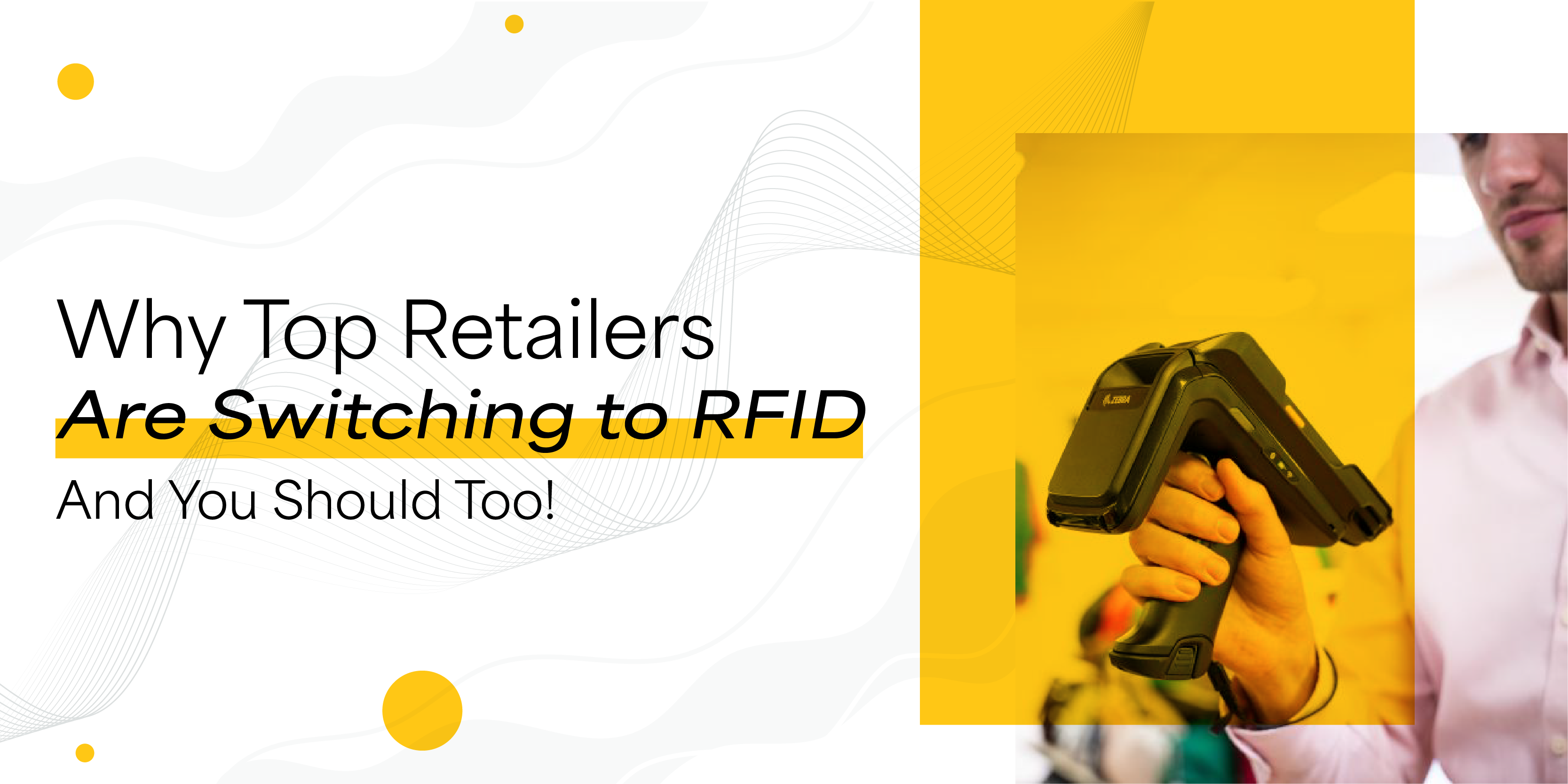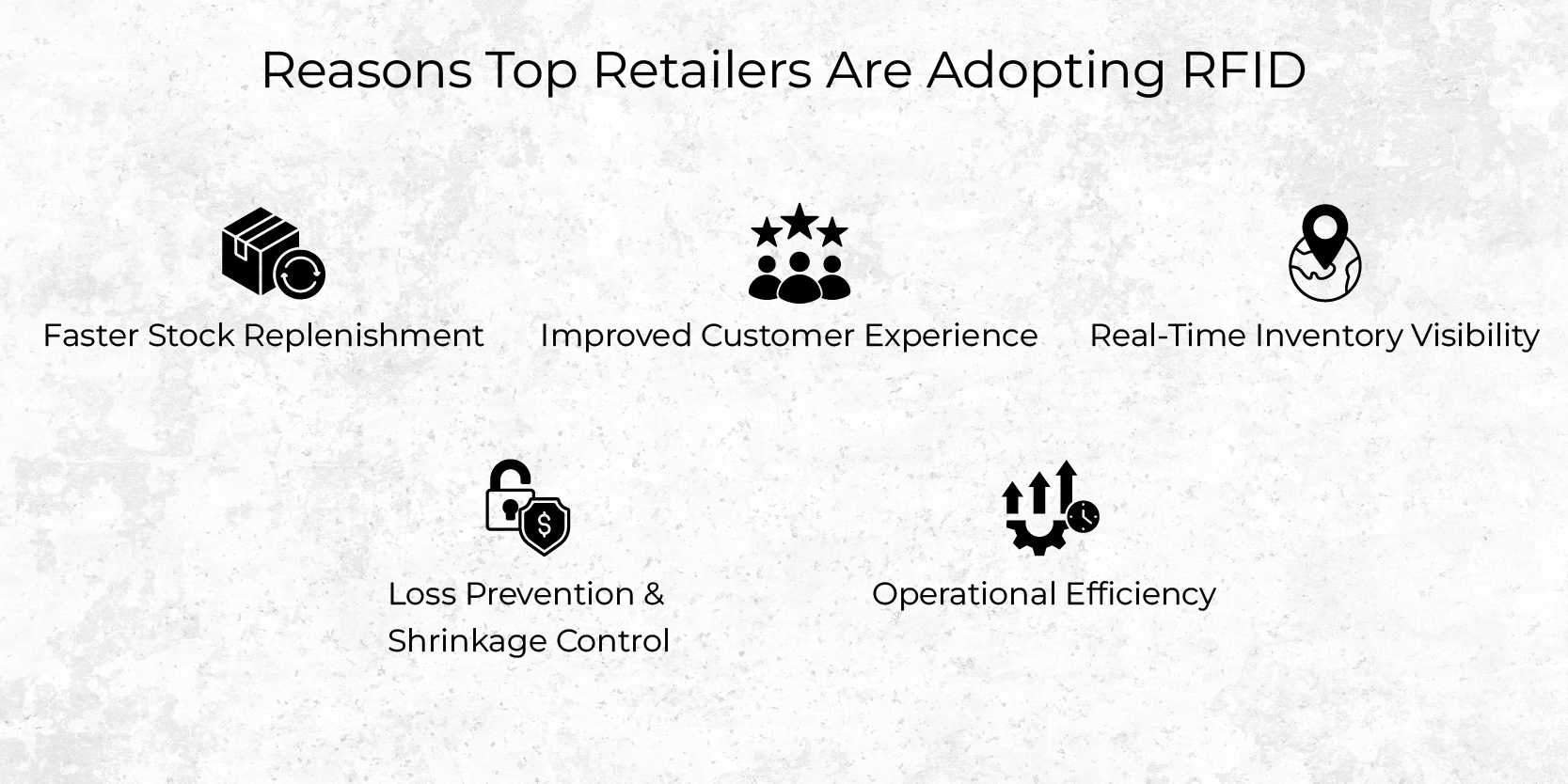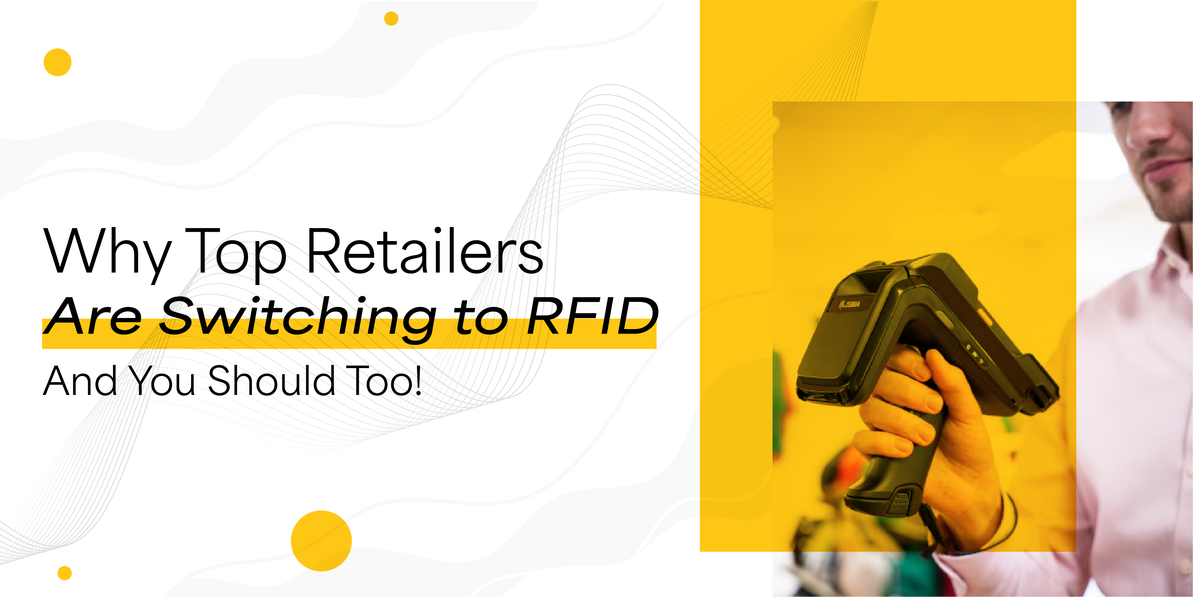Why Top Retailers Are Switching to RFID – And You Should Too
Introduction
In the ever-evolving retail world, staying ahead means being smarter, faster, and more connected than ever before. As customer expectations grow and shopping behaviors shift, retailers are turning to innovative technologies to keep up. One such technology leading the charge is RFID (Radio Frequency Identification). While barcodes have long been the go-to for tracking inventory, top retailers are now switching to RFID for its ability to provide real-time visibility, improve efficiency, and boost customer satisfaction. If you're still relying on traditional methods, it's time to explore why RFID could be a game-changer for your business too.

What Is RFID and How Does It Work in Retail?
RFID uses radio waves to automatically identify and track tags attached to objects—usually products or packages. Each RFID tag contains a small chip and antenna, which transmits a unique ID to an RFID reader. Unlike barcodes, RFID tags don’t require line-of-sight and can be read from several feet away, even through packaging.
RFID in Retail
RFID for retailers offers real-time visibility into inventory across stores, warehouses, and supply chains. By automating stock tracking and reducing errors, RFID in retail helps streamline operations, improve replenishment accuracy, and deliver a better, more consistent customer experience.
Reasons Top Retailers Are Adopting RFID

Read also: RFID in the Retail Industry
Faster Stock Replenishment
RFID enables automated stock alerts when items run low, allowing faster and more efficient restocking. Store associates can quickly locate missing items or replenish shelves, keeping popular products available for customers and preventing missed sales opportunities.
Improved Customer Experience
When customers can find what they’re looking for—whether in-store or online—they're more likely to make a purchase and return in the future. RFID ensures accurate inventory across all channels, supporting seamless services like click-and-collect (BOPIS), ship-from-store, and real-time item lookup.
Real-Time Inventory Visibility
With RFID, retailers gain accurate, real-time insights into their inventory levels. This means they know exactly what’s in stock, what’s selling, and what needs to be replenished. It eliminates the guesswork and reduces the reliance on time-consuming manual stock counts.
Loss Prevention and Shrinkage Control
Retail shrinkage from theft, misplacement, or human error is a major issue. RFID provides item-level tracking and better visibility into product movement, helping reduce loss and improving accountability throughout the supply chain.
Operational Efficiency
Routine tasks like inventory counts or product audits become faster and more accurate with RFID. Associates can scan hundreds of items in seconds without opening boxes or scanning each item individually. This not only saves time but also reduces labor costs.
Retail Giants Using RFID Successfully
Walmart: Walmart has expanded its RFID program beyond apparel to include categories like home goods and electronics. By using RFID, Walmart has improved inventory accuracy, reduced out-of-stocks, and enhanced product availability, which supports smoother store operations and a better omnichannel shopping experience for customers.
Why RFID Is No Longer Just for Big Retailers
While early RFID systems were expensive and complex, the technology has become far more accessible in recent years. Tag costs have dropped, and cloud-based RFID software platforms make it easier for small and mid-sized retailers to adopt the technology. Modern RFID systems are scalable, meaning you can start small and grow as needed—whether you're managing one store or a whole chain.
How to Get Started with RFID in Your Store
Getting started with RFID doesn’t have to be overwhelming. Here are some basic steps to guide your journey:
Evaluate Your Needs: Start by identifying key pain points—like frequent stockouts, inventory errors, or slow restocking—and consider how RFID can address them.
Choose the Right Hardware: Select RFID readers and tag based on your product types and store layout. UHF RFID tags are commonly used in retail for their range and versatility.
Select a Software Platform: Choose an RFID software solution that integrates with your current POS, inventory, or ERP system. A cloud-based platform like TagMatiks Retail is a powerful option, offering real-time inventory tracking, simple setup, and remote access, making it ideal for retailers of all sizes.
Train Your Team: Ensure your staff understands how to use the RFID system and how it improves their day-to-day work.
Pilot, Then Scale: Begin with a small pilot—perhaps one store or category—and measure results before expanding.
Final Thoughts
Retail is evolving, and RFID is helping businesses of all sizes keep up. From improving inventory accuracy to enhancing the customer experience, RFID delivers real, measurable value. It’s not just a tech trend—it’s a strategic move for future-ready retailers. The best part? You don’t have to be a global brand to benefit. With affordable options and scalable systems, RFID is now within reach for every retailer.
If top retailers are making the switch, maybe it’s time you did too.
Read Also: Importance of RFID Retail Software for Retail Business
Recent Posts
-
The Benefits of Smart Cabinets for Scrub Management in Hospitals
Managing hospital scrubs may seem simple, but it’s a critical part of maintaining hygiene and operat …Nov 10th 2025 -
RFID Software in Healthcare — Track Equipment & Simplify Audits
Introduction RFID software is becoming essential in the healthcare industry for managing physical as …Oct 31st 2025 -
Why RFID Self-Checkout Systems Are Key to the Customer Experience
Retail is evolving rapidly. Customers today expect speed, convenience, and minimal friction during t …Oct 16th 2025




